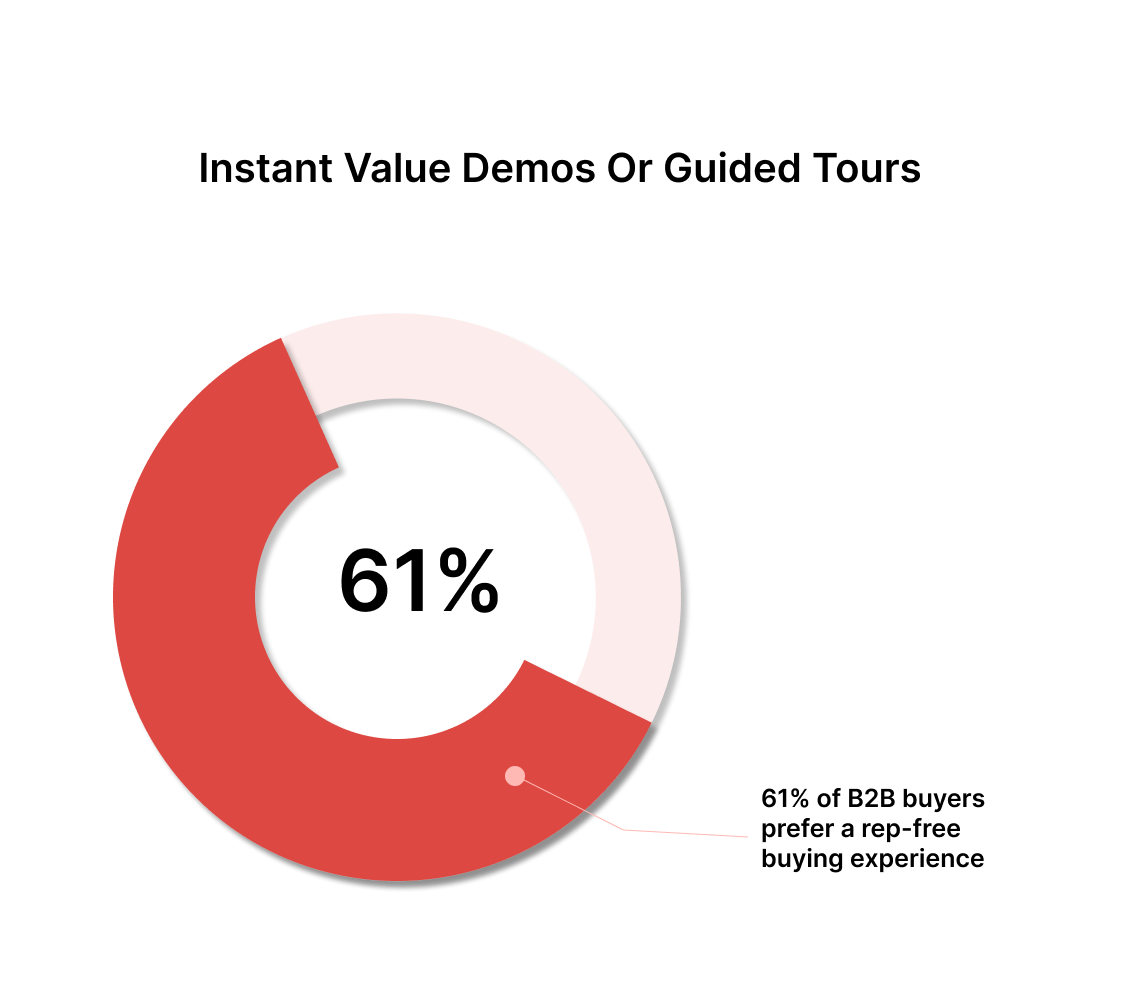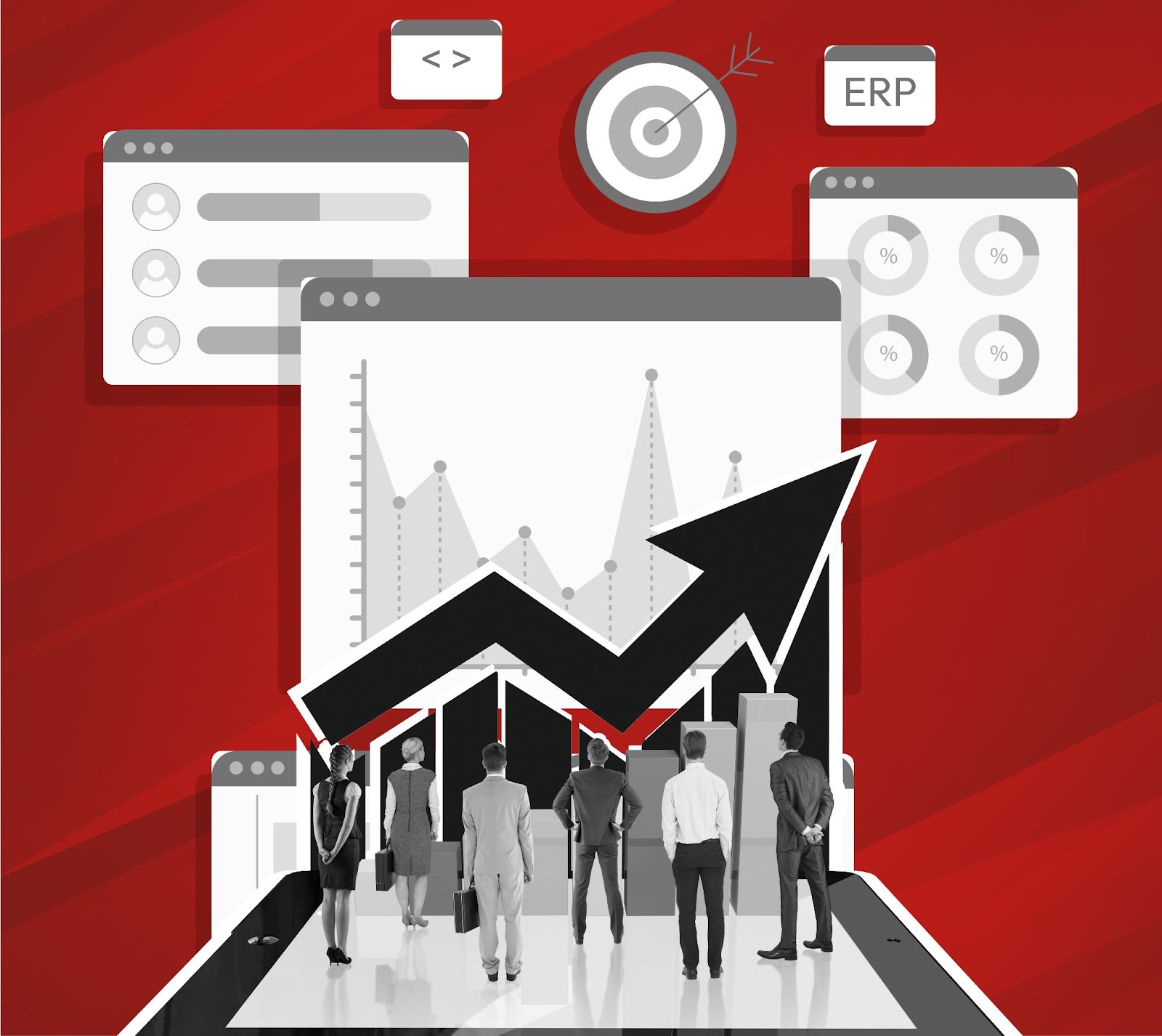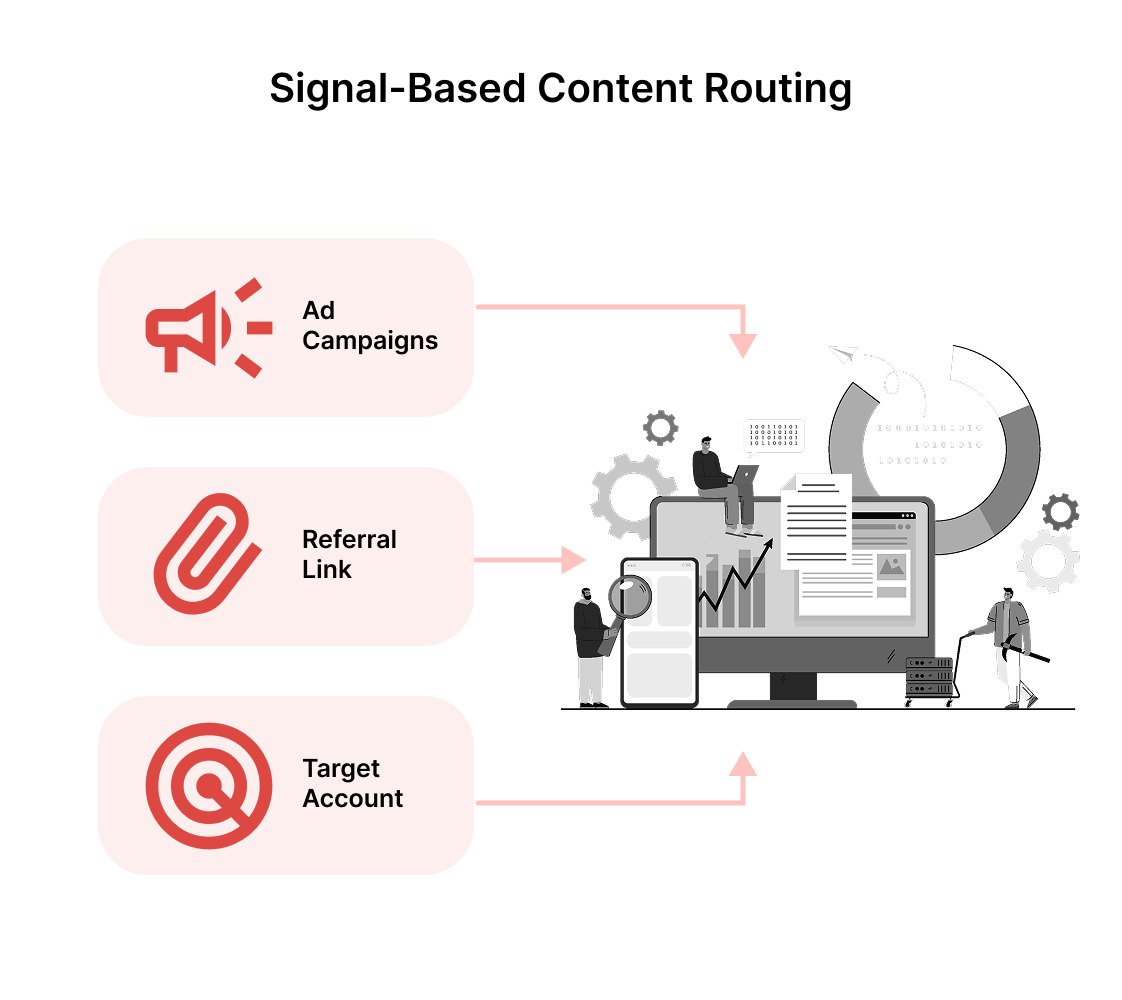20 Must-have Website Features for B2B Businesses in 2025
A fast-loading site or polished UX no longer wins anyone over on its own. What matters now is whether your website earns a spot on someone’s shortlist before they even reach out. Buyers don’t wait around to be convinced. They compare, validate, and decide before contact.
Research by Bain & Company and Google found that 92% of B2B buyers walk in with a shortlist in hand. And 90% end up selecting a name from that very list.
If your site doesn’t speak their language, answer their questions, and build confidence fast, you’re out before the conversation begins. Every feature you include or omit quietly shapes that decision. Knowing what to fix and how to fix it could change everything.
Key Insights:
- Mobile B2B Research Is Reshaping Website Requirements: Executive decision-makers increasingly research solutions during commutes using mobile devices. Traditional desktop-first B2B sites lose prospects who can't access critical information on smaller screens.
- Self-Service Evaluation Tools Reduce Sales Friction More Than Content Marketing: Companies investing in robust self-service tools report shorter sales cycles because prospects arrive at conversations already convinced of fit and value.
- Integration Documentation Drives Technical Buyer Confidence: API documentation and setup guides build technical confidence before sales conversations begin. Companies with comprehensive integration resources report fewer technical objections during procurement processes.
- Personalization Based on Company Context Outperforms Demographic Targeting: Showing relevant use cases based on company size and industry creates stronger connections than demographic personalization.
A growing startup sees different value propositions than an established enterprise. Context-aware content presentation increases engagement rates and reduces messaging disconnect.
Quick Summary:
And now a detailed explanation for those who wish to deep dive:
1. Advanced Search with Filtering Capabilities

B2B buyers research specific solutions, not generic products. Your search function must handle technical terminology, product codes, and industry-specific language while offering filters for price ranges, integrations, and deployment options.
Poor search functionality forces prospects to competitor sites. Advanced search can significantly reduce time-to-information discovery and increase qualified lead generation.
2. Detailed Product Specification Pages
Building on that foundation, technical decision-makers need comprehensive specifications, compatibility charts, and integration requirements upfront. After all, generic product descriptions waste everyone's time.
Instead, include API documentation links, system requirements, security certifications, and compliance standards. The result? Thorough spec pages eliminate most pre-sales questions and accelerate evaluation cycles from weeks to days.
3. Interactive ROI Calculators
Research shows 80% of B2B buyers initiate first contact only after completing 70% of their buying journey independently.
That's the reason why static case studies don't address unique business scenarios. Build calculators that factor in company size, current processes, and implementation timelines. These tools let prospects run their own financial models and arrive at sales conversations already convinced of the value proposition.
4. Real-Time Personalization
Buyers don’t want to start from scratch every time they visit. In fact, according to Gartner research, 86% of B2B customers expect companies to already understand their background during an interaction. That expectation now applies to websites, not just sales calls.
For instance, a returning visitor from a logistics company shouldn’t see generic use cases. Instead, consider showing them examples tied to supply chain workflows, integrations with their systems, and relevant pricing tiers.
When a site reflects what someone already cares about, it builds momentum without manual effort. It saves time, answers unspoken questions, and makes next steps feel obvious without ever needing a form fill.
5. Instant Value Demos or Guided Tours

Many B2B consumers now expect to evaluate products without needing a conversation. A 2025 Gartner survey found that 61% of B2B buyers prefer a rep-free buying experience. That makes self-service product exposure essential.
Interactive demos, walkthroughs, or sandbox environments help users explore the core functionality on their own terms. When done right, this lowers friction early on, supports faster internal alignment, and leads to more qualified conversations later.
6. Live Chat with Actual Product Specialists
Basic chatbots don’t move deals forward. What buyers often need is a quick, specific answer that doesn’t involve filling out a form or waiting for a follow-up.
A chat window that connects directly to someone with hands-on product knowledge, someone who can speak to integrations, custom use cases, or technical depth can make a meaningful difference. It helps remove hesitation early, especially when timing or internal momentum is fragile.
7. Free Trial or Demo Scheduling System
Once prospects are convinced, they want hands-on experience before committing resources to lengthy sales processes. Unfortunately, complicated demo requests create unnecessary friction.
The solution is implementing instant trial access or one-click demo scheduling with calendar integration. This approach streamlines trial access, increases conversion rates, and reduces time from interest to qualified opportunity significantly.
8. Use-Case Driven Social Proof

General praise has limited influence during evaluation. What makes an impression is seeing outcomes tied to problems that resemble the buyer’s own. A quote from a similar company describing reduced onboarding time or measurable operational gains carries more weight than standalone compliments.
When social proof is structured around outcomes (by segment, use case, or problem solved) it quietly validates your solution without overselling it.
For design inspiration, you can check out our testimonial section.
9. Case Studies with Quantifiable Results
Speaking of convincing prospects, generic success stories hold little weight with analytical buyers. Rather than fluff, document specific metrics, implementation challenges, and measurable outcomes.
Make sure to include company size, industry verticals, and timeline details. The payoff is clear - comprehensive case studies with hard numbers reduce sales cycle length because prospects can visualize exact implementation scenarios within their own organizations.
10. Resource Library with Gated Premium Content
Apart from immediate support, B2B buyers consume extensive content during evaluation processes. However, surface-level blog posts don't establish expertise. What works better, then?
Create libraries with whitepapers, technical guides, and industry benchmarks. Gate premium content strategically to capture contact information while providing genuine value. Well-organized resource centers generate more qualified leads than scattered content approaches.
Pro tip: Gate only the materials buyers are likely to share internally. If it helps someone make a business case, it’s worth the trade.
11. Accessible Integration and Technical Documentation
Technical due diligence often begins before your team is even aware there’s interest. Engineering leads and solution architects want to know what working with your product will actually require.
When documentation is public, well-structured, and easy to search, that confidence builds quietly. It also saves time, both for prospects and your sales engineers, by reducing the number of gating steps between curiosity and technical validation.
12. Enterprise Readiness Signals Built In

Lack of transparency around compliance and risk protocols can slow down deals even when everything else checks out. Procurement teams don’t want to dig for security certifications or SLA language.
Publishing audit reports, access controls, uptime metrics, and data handling practices early in the journey helps move deals forward, especially in regulated or risk-sensitive industries. It signals preparedness without needing to say so.
13. Intent-Based CTAs Across the Funnel
When calls to action don’t match where the buyer is in their process, they’re easy to ignore. Someone researching integrations doesn’t need a pricing call. A decision-maker comparing vendors doesn’t need a blog.
CTAs should feel like logical next steps, not sales triggers. Aligning them with intent creates a more intuitive path forward, and makes the buying process feel less forced at every stage.
14. ustomer Portal Access Points
Don't forget about existing customers who need ongoing support, documentation, and account management tools. The issue is that hidden portal access creates frustration and support ticket volume.
The fix is simple: prominently display customer login areas, support resources, and account management tools. Accessible customer portals reduce support requests and increase customer satisfaction scores measurably.
15. Multi-Channel Contact Options with Response Time Commitments
Finally, B2B buyers prefer different communication channels based on urgency and complexity. The challenge is that limited contact options create bottlenecks.
Consider offering phone, email, chat, and callback scheduling with clear response time expectations. Multiple contact methods increase lead capture and accommodate various buyer preferences throughout different evaluation stages.
16. Mobile-Responsive Design with Touch-Optimized Navigation

Don't assume B2B buyers only research from desktops. Research says 80% of B2B decision-makers now browse solutions on their mobile during various stages of the sales journey.
Don’t treat mobile as an afterthought. Your site needs touch-friendly buttons, readable fonts without zooming, and simplified navigation menus. Mobile-optimized experiences keep busy executives engaged instead of bouncing to competitors with better mobile experiences.
17. ersonalized Content Based on Company Size and Industry
Generic messaging fails because different businesses have vastly different needs. A startup's concerns differ completely from enterprise requirements. Smart websites adapt content dynamically based on visitor profiles, showing relevant use cases, pricing models, and implementation approaches.
This means presenting compliance features to healthcare visitors while highlighting scalability to fast-growing companies. Personalized experiences make prospects feel understood rather than marketed to.
Also read: SaaS Messaging Guide: Framework, Strategy, and More
18. Self-Serve Security and Compliance Portals
Security reviews now begin before vendor conversations even start. Buyers, especially in regulated sectors, need immediate access to security controls, audit trails, and documentation.
Waiting for a rep to respond slows progress. A secure portal with downloadable SOC 2 reports, access policies, breach protocols, and legal terms removes unnecessary friction. It also helps stakeholders across departments do their due diligence without chasing your team for links.
Pro tip: Link this portal from your footer, not just your pricing or sales pages. Legal and IT teams usually enter the site through a shared document or forwarded URL.
information accelerates procurement processes by addressing concerns proactively.
19. On-Page Competitive Comparison Tools
Buyers don’t look at your site in isolation, as you may already know. They’re comparing you side-by-side with others. If that’s inevitable, own the comparison. Provide structured, factual breakdowns between your solution and key alternatives. Keep it honest.
A clear explanation of where your product fits better and where it doesn’t helps buyers decide faster. When handled well, comparison tools can shorten the sales cycle and support internal advocacy.
20. Signal-Based Content Routing

B2B sites often treat all traffic the same, regardless of source or intent. But inbound signals like ad campaigns, referral links, or target accounts should influence what a visitor sees.
Routing traffic to versioned landing pages or curated content paths based on source data or UTM parameters improves message clarity and keeps the experience focused. This helps reduce drop-off from mismatched messaging and improves conversion quality over time.
Pro tip: Align ad-to-page continuity tightly. If someone clicks on a solution-focused headline, they shouldn’t land on a generic homepage.
Integrating these essential website features requires A LOT more than basic web development knowledge.
Without extremely detailed understanding of B2B buyer psychology and hands-on experience with conversion optimization, even well-intentioned implementations can fall flat.
The reality in the B2B SaaS industry is that prospects arrive at your website with sophisticated expectations shaped by years of software evaluation experience.
How Beetle Beetle Can Help?
Beetle works with B2B SaaS companies to bridge the gap between technical features and visitor understanding. We research your market and customers to identify where your current site creates friction in the buying process.
Our approach involves creating custom product visuals that clarify complex features, developing comprehensive style guides, and building fast, interactive websites using Webflow.
The process includes competitive analysis, performance optimization, and flexible CMS systems that support ongoing content needs. Projects typically span 2-8 weeks with investment from $3,000 to $30,000.
If your site traffic looks healthy but conversions remain disappointing, our team can audit your current setup and pinpoint the specific barriers preventing prospects from moving forward.
Book a free website audit by real experts who’ll show you exactly where the friction is and what it’ll take to fix it.
FAQs
1. What are the 5 major components of a web page?
The five major components of a web page are:
- Header - Contains the site logo, navigation menu, and primary branding elements that appear at the top of every page.
- Navigation - The menu system that helps users move between different sections and pages of the website.
- Main Content Area - The central section containing the primary information, text, images, and interactive elements specific to each page.
- Sidebar - Secondary content area often containing additional navigation, related links, advertisements, or supplementary information.
- Footer - Bottom section with contact information, copyright details, secondary navigation, and important links.
2. What are the features of a good website?
A good website should have:
- Fast loading speed - Pages load quickly to prevent user abandonment.
- Mobile responsiveness - Works seamlessly across all devices and screen sizes.
- Clear navigation - Intuitive menu structure that helps users find information easily.
- Quality content - Valuable, relevant, and well-written information that serves user needs.
- Professional design - Clean, visually appealing layout that reflects brand credibility.
- Search functionality - Allows users to quickly find specific information.
- Contact information - Easy-to-find ways to reach the business.
- Security features - SSL certificates and secure data handling practices.
- SEO optimization - Structured to rank well in search engine results.
- Accessibility - Usable by people with disabilities and different technical capabilities.
3. Isn’t adding too many features going to overwhelm visitors or slow the site down?
Only if they’re poorly implemented. Prioritize functionality based on user intent and apply personalization or progressive disclosure to reduce visual clutter. Performance issues usually stem from bad design choices, not from the number of features themselves.
4. What role does visual design play in B2B feature effectiveness?
Function matters, but presentation still shapes perception. Features like comparison tables, demos, or calculators are only useful if users can find them easily and understand them at a glance. A clear hierarchy, consistent styling, and readable content directly impact engagement.
5. How can I measure whether a new feature is actually working?
Track engagement metrics tied to each feature, such as click-through rates, time on section, scroll depth, or conversion events. Then overlay that data with CRM or lead scoring tools to see which interactions correlate with qualified pipeline activity.
6. Do smaller SaaS companies need all of these website features too?
Not necessarily all at once. But if your sales cycles involve technical validation, multiple stakeholders, or security reviews, even early-stage companies benefit from building a few foundational features well, especially ones that reduce dependency on sales calls.


.jpg)





























